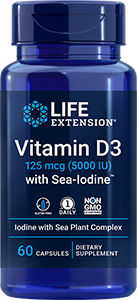| A report published in the November, 2009 issue of the International Journal of Cancer describes research conducted at Oregon State University's Linus Pauling Institute that reveals a potential role in cancer therapy for chlorophyllin, a water-soluble derivative of chlorophyll, the green pigment that gives plants their color. The compound has been investigated for cancer prevention as well as treatment. Linus Pauling Institute's Cancer Chemoprotection Program director Rod Dashwood and his associates tested the effect of chlorophyllin on cultured human colon cancer cells. They observed that the cells spent more time in their synthesis phase, resulting in a disruption in growth that led to cell death. The researchers discovered that chlorophyllin reduces an enzyme needed for DNA synthesis known as ribonucleotide reductase. The enzyme is also targeted by the chemotherapy drug hydroxyurea. Comparison of chlorophyllin and hydroxyurea's effects revealed a ten times greater benefit for chlorophyllin against colon cancer cells. The finding suggests a role for chlorophyllin in combination with conventional cancer treatment, which could enable the administration of a lower dose of potentially toxic chemotherapeutic drugs. “In cancer research right now there’s interest in approaches that can reduce ribonucleotide reductase,” Dr Dashwood noted. “At the doses used in our experiments, chlorophyllin almost completely stops the activity of this enzyme.” "Put simply, chlorophyllin seems to prevent the enzyme from being made, whereas hydroxyurea acts on already synthesized enzyme to block its activity," Dr Dashwood told Life Extension. "Thus, the two together could be very effective for targeting this pathway in cancer cells." Recent research has uncovered a role for other natural compounds known as organoseleniums in fighting cancer. These selenium compounds, found in garlic and Brazil nuts, metabolize to histone deacetylase (HDAC) inhibitors in cancer cells, which reactivate silenced tumor-suppressor genes. “Most chemotherapeutic approaches to cancer try to target cancer cells specifically and do something that slows or stops their cell growth process,” Dr Dashwood observed. “We’re now identifying such mechanisms of action for natural compounds, including dietary agents. With further research we may be able to make the two approaches work together to enhance the effectiveness of cancer therapies.” “Whether it’s HDAC inhibition leading to one manner of cancer cell growth arrest, or loss of ribonucleotide reductase activity leading to another, as seen with chlorophyllin, there’s significant promise in the use of natural products for combined cancer therapies,” he noted. “These are areas that merit continued research.” | 














